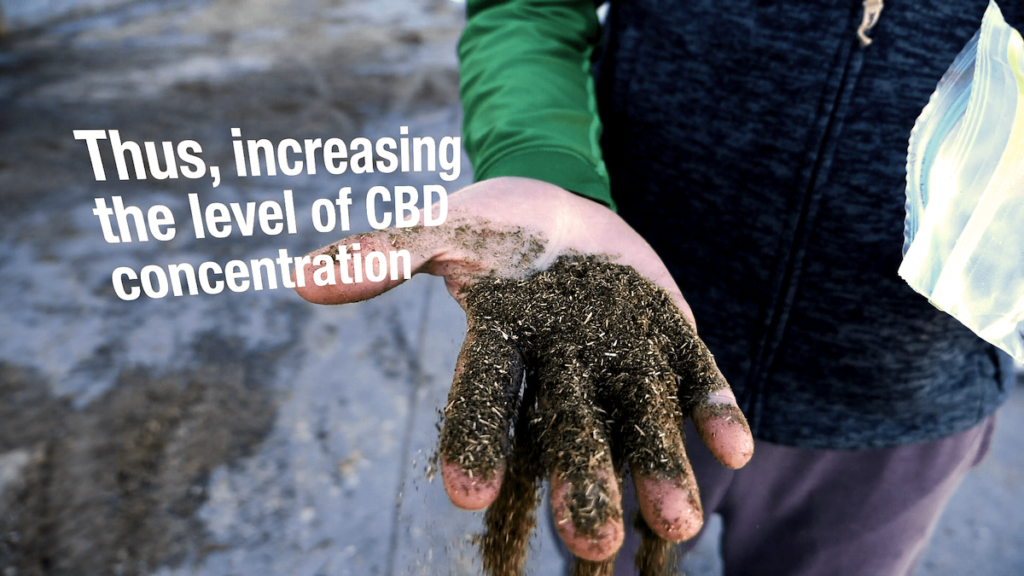
A significant amount of 2019’s hemp crop in the U.S. was ruined and rendered unsalable. That unhappy result was due in part to cultivators and processors struggling to dry and store harvested hemp successfully after U.S. hemp production roughly quadrupled from 2018 to 2019. In many cases, methods, equipment, and facilities to meet the challenge of preserving increased volumes of hemp biomass fell short. In others, unsold biomass saw its CBD content degrade over time in an oversupplied market, lowering its value.
However, new practices are being developed to preserve harvested hemp. Experts entering the hemp industry from related fields have also been applying existing methods, namely cryogenic freezing, to help reduce post-harvest crop losses.
What are the Challenges in Preserving Harvested Hemp?

Mark Mathis is CEO of Colorado-based High Mountain Processing (HMP). The company, now in its tenth year of operation, processes several different biomass-oriented agricultural products. They have been working with hemp for three years. Mathis told Hemp Benchmarks hemp is unique in that it develops mold “faster than anything I’ve ever seen. It’s 70% moisture and [if] you put it in a big pile it gets hot fast; it starts going through that composting process extremely fast.”
Given these challenges, HMP has spent the past year experimenting with hemp drying and storage issues. Specifically, they have been investigating what happens to hemp when it is rolled into bales, a process used commonly and successfully in traditional agriculture for crops such as hay. Bales compact organic material, remove most of the oxygen, and are watertight.
With hemp, however, there have been issues controlling anaerobic digestion created by bacteria within bales. Anaerobic bacteria can thrive on organic materials in an oxygen-scarce environment. Those microorganisms break down biomass, creating methane and carbon dioxide, along with water vapor and other gases
“We started getting in [hemp] bales from farmers,” Mathis remembered, “and the first thing we noticed was the bales had accumulated fluid in the bottom, and basically [that’s] anaerobic activity. That’s a fairly significant sign of anaerobic bacteria like e-coli or listeria or something like that, really harmful stuff. When we talked to our extractors they said, ‘we want nothing to do with it.’”
How Can CBD Potency be Maintained?

While some hemp cultivators still rely on hang-drying their plants right after harvest, Mathis does not think that process can be profitable or efficient when it comes to handling large volumes of biomass. “If you’re not going to get your material dried immediately,” he said, “it needs to get frozen.”
HMP has carried out a year-long experiment freezing green, freshly harvested CBD hemp. Last year, right after the autumn harvest, they created several dozen bales of fresh hemp and placed them in a field in northern Colorado. The content of the bales was tested for CBD potency after 30, 60, 90, and 120 days outside. HMP also placed hemp bales in a standard cold storage warehouse at freezing temperatures.

For the bales that sat in a field, “we saw a significant, like a 2% … degradation over that 90 to 120 days in the CBD level,” he said. “And the stuff that we froze, when we tested that, it was about 0.2% of degradation, so almost nothing in that same period.”
Mathis said that by freezing hemp that cannot be dried immediately after harvest, “we can supply a consumer brand or an extractor the same exact product consistently for 12 months of the year. That’s versus having everything shoved at you during harvest. And who wants to buy a year’s worth of product on their inventory and have that carrying cost?”
Hemp and Cryogenics
Research is also underway to see if cryogenic freezing, the use of liquid nitrogen to super-cool organic material, can help retain the cannabinoids in hemp from the time of its harvest to the extraction process. Dr. Bryan Berger, associate professor of chemical and biomedical engineering at the University of Virginia, has been working with the cryogenic freezing technology lab at Air Products, a long-established industrial gases company based in Pennsylvania.
Conventional drying and storage methods for hemp, Berger told Hemp Benchmarks, can result in the loss of many of the plant’s valuable chemical components. However, he said, “by storing and processing and drying the material at very low temperatures you’re preserving more of that chemical integrity – and … potentially also preserving more of the volatiles, like terpenes, that might be important in the downstream processing.”
Cryogenics, said Berger, is already used in a wide variety of industrial products, while having the advantage of being scalable and cost-effective. A recent press release touted several potential benefits of employing industrial gases, like liquid nitrogen, and cryogenic freezing in the hemp supply chain, including preserving the shelf-life and quality of packaged products, as well as aiding in the efficiency of ethanol extraction, a commonly used method in the hemp-cannabinoid industry.
While cryogenics will not be a “silver bullet” to solve all of hemp’s drying and storage problems, it could become available to smaller cultivators via cooperatives and other cost-sharing models used by agricultural organizations. “Honestly it seems very much like the story of hemp in general,” Berger said. “What product are you trying to make? What’s the value of the marketplace that you can charge for it? We have to figure out scalable, cost-effective solutions.”



